2020-09-03 - Nº 279
Editorial
Esta é a Newsletter Nº 279 que se apresenta com o mesmo formato que as anteriores. Se gostar da Newsletter partilhe-a!
Todas as Newsletters encontram-se indexadas no link.
Esta Newsletter tem os seguintes tópicos:
Faz hoje anos que nascia, em 1814, o Matemático britânico James Joseph Sylvester. Ele, juntamente com Arthur Cayley, fundou a teoria dos invariantes algébricos, coeficientes de equação algébrica que permanecem inalterados quando os eixos coordenados são transladados ou girados. Sylvester fez um trabalho importante na teoria da matriz, em particular, para estudar geometria dimensional superior. Em 1851, ele descobriu o discriminante de uma equação cúbica.
Faz também hoje anos que nascia, em 1874, o geofísico e matemático norueguês Fredrik Carl Mülertz Størmer. Ele ficou conhecido por desenvolver uma teoria matemática dos fenómenos aurorais. Uma aurora é a luz emitida por protões e electrões energéticos no topo da atmosfera da Terra quando eles entram em contacto com partículas do vento solar. Ele também contribuiu com importantes observações fotográficas e dados matemáticos para a compreensão da aurora polar, das nuvens estratosféricas e mesosféricas, e da estrutura da ionosfera. A descoberta dos cinturões de radiação de Van Allen por James Van Allen confirmou com surpreendente precisão a análise teórica de Størmer das trajectórias de partículas carregadas com energia solar no campo magnético da Terra.
Faz igualmente hoje anos que nascia, em 1875, o engenheiro automóvel austríaco Ferdinand Porsche. Ele projectou o popular carro Volkswagen. Em 1900, como um jovem engenheiro e piloto de testes, Porsche tinha criado os motores do cubo da roda do Lohner-Porsche Electric Car exposto na Exposição de Paris, tornando o nome Porsche famoso mundialmente. Em 1935, a ideia de Adolph Hitler - o Carocha - foi projectado por Porsche. Hitler queria um carro construído para as massas. Em 1938, o primeiro Carocha foi concluído - pouco antes da eclosão da Segunda Guerra Mundial. O carro ofereceu tecnologia inovadora, incluindo motor refrigerado a ar, formato atípico, sem grade frontal e motor traseiro. Foi só em 1946 que o Volkswagen (cujo nome significa "carro do povo") entrou em produção em série.
Faz também hoje anos que nascia, em 1883, o físico americano Harold DeForest Arnold. As suas pesquisas levaram ao desenvolvimento da telefonia de longa distância e da comunicação por rádio. Ele trabalhou na Western Electric em tubos termiônicos, que amplificavam os sinais de rádio e telefone, levando à telefonia transcontinental (Julho de 1914). Mesmo antes da linha intercontinental ser concluída, Arnold estava a dirigir o trabalho no desenvolvimento de novos tubos de alta potência para estender o serviço telefónico por rádio a outros continentes. A primeira demonstração intercontinental de telefone por rádio (29 de Setembro de 1915) foi transmitida da cidade de Nova York para Arlington, Virgínia, e depois para São Francisco e Honolulu.
Por fim, faz hoje anos que nascia, em 1905, o físico americano Carl David Anderson. Ele partilhou (com Victor Francis Hess da Áustria) o Prémio Nobel de Física em 1936 pela sua descoberta do positrão, ou electrão positivo, a primeira partícula conhecida de antimatéria. Ele examinou as fotos de raios cósmicos tiradas ao passar por uma câmara de nuvem de Wilson num campo magnético forte. Além dos caminhos curvos dos electrões negativos, ele encontrou também caminhos que se desviam na direcção oposta, correspondendo a partículas carregadas positivamente - mas tendo a mesma massa de um electrão! Anteriormente, Dirac previu tais partículas por solução teórica para equações de campo electromagnético. Anderson posteriormente descobriu a existência física do positrão.
À precisamente 44 anos a nave espacial Viking II pousou em Marte e tirou as primeiras fotos da sua superfície. A sua irmã gémea, a Viking I, foi a primeira a chegar à superfície de Marte a 20 de Julho de 1976. Cada sonda continha instrumentos que examinavam as propriedades físicas e magnéticas do solo; analisou a atmosfera e os padrões climáticos de Marte; e determinou qualquer evidência de vida passada ou presente. Cada nave Viking, lançada dentro do cone do nariz de um foguetão Titan Centaur, era composta de duas partes: um orbitador e um módulo de aterragem. O trabalho inicial do orbitador era pesquisar o planeta em busca de um local de pouso adequado. Mais tarde, os instrumentos do orbitador estudaram o planeta e sua atmosfera, enquanto o orbitador actuou como uma estação de retransmissão de rádio para transmitir dados da sonda.
Em 1752, o dia 3 de Setembro não existiu na Grã-Bretanha, nem as 10 datas seguintes. O calendário juliano da era romana estava 11 dias fora de sincronia em relação ao ciclo solar. A Bretanha e suas colónias americanas adoptaram o calendário gregoriano, que mudou a data deste dia de 3 de Setembro para 14 de Setembro. As pessoas revoltaram-se nas ruas pensando que o governo tinha roubado 11 dias das suas vidas. Instituído pelo Papa Gregório XIII em 1582, o calendário tem 365 dias com um dia extra a cada quatro anos (o ano bissexto), excepto em anos divisíveis por 100, mas não divisíveis por 400. Assim, o ano civil tem uma duração média de 365,2422 dias. Outros países demoraram bastante mais tempo a mudar, fazendo a mudança apenas no século XX. Em Portugal a mudança foi feita quase 200 anos antes.
Nesta semana que passou a empresa de biotecnologia Neuralink fez uma apresentação da sua tecnologia de interface homem-máquina. O CEO da Tesla e da SpaceX, Elon Musk fez uma apresentação com direito a live-demo onde explicou as mais-valias da tecnologia desenvolvida pela Neuralink e mostrou-a aplicada a porcos. A tecnologia da Neuralink, afirma o fundador, "combinará inteligência biológica com inteligência de máquina" e talvez nos ajude a sobreviver ao apocalipse da IA.
Também nesta semana que passou o satélite OGO-1 - Orbiting Geophysics Observatory - lançado em 1964, saiu da sua órbita para se despenhar contra a atmosfera da Terra. Com cerca de 487Kg o satélite foi o primeiro de uma série de cinco missões para ajudar os cientistas a entender o ambiente magnético a volta da Terra. Foi o ultimo a sair da sua órbita. Desde 1971 que já tinha sido descomissionado.
Nesta semana que passou foram igualmente lançados mais 60 satélites da constelação Starlink a bordo de um foguetão da SpaceX e foi feito o lançamento a partir da Guiana Francesa do foguetão Vega que transportou 53 satélites. Operado pela ESA este é especializado em transportar satélites de pequena dimensão. O Vega transportou sete microssatélites com peso de 15 a 150 kg, além de 46 CubeSat (satélite de pequenas dimensões), todos libertados a cerca de 515 km e 530 km de altitude. O satélite final foi lançado cerca de 104 minutos após a descolagem. Nestes satélites estavam os dois satélites da missão FSSCat - Sistema de Satélites Federados.
Na Newsletter desta semana apresentamos diversas noticias, artigos científicos assim como projetos de maker.
 João Alves ([email protected])
João Alves ([email protected])
O conteúdo da Newsletter encontra-se sob a licença  Creative Commons Attribution-NonCommercial-ShareAlike 4.0 International License.
Creative Commons Attribution-NonCommercial-ShareAlike 4.0 International License.
Novidades da Semana

Elon Musk Is Finally Revealing Neuralink’s Controversial Brain Chip
"On Friday, Tesla and SpaceX CEO Elon Musk will reveal a major update of his biotech startup Neuralink and demonstrate a “working device” for the company’s hyped brain-machine interface. Neuralink’s technology, the founder claims, will “merge biological intelligence with machine intelligence” and perhaps help us survive the AI apocalypse. Neuralink was first introduced to the public at an event in June 2019 when Musk unveiled his next big idea: implanting a wireless chip into a human brain by drilling a small hole in the skull and inserting thin, flexible “threads” of electrodes through brain tissue. If successful, a brain implant like this could revolutionize medicine, Musk teased, such as treating brain injuries, depression, addiction and other neurological disorders. The technology is only half the equation. Last year, Musk noted that putting a chip in someone’s head would require a neurosurgeon, which can be expensive and hard to scale." [...]
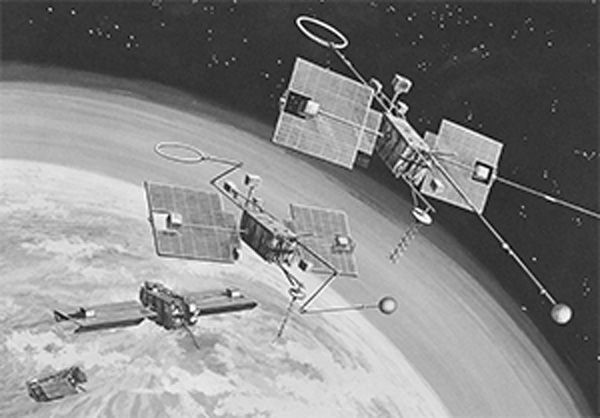
Vintage NASA satellite falls to Earth, meets fiery doom after 56 years in space
"A long-retired NASA satellite burned up in Earth's atmosphere over the weekend, the agency has confirmed. NASA launched the satellite, called Orbiting Geophysics Observatory 1, or OGO-1, in September 1964, the first in a series of five missions to help scientists understand the magnetic environment around Earth. OGO-1 was the first to launch but the last to fall out of orbit; the satellite had circled Earth aimlessly since its retirement in 1971. But orbiting Earth is a tricky thing to do, since the particles in our plush atmosphere collide with spacecraft and slow them down, even at very high altitudes where the atmosphere is thin. That speed reduction also lowers the spacecraft's altitude, until reentry becomes inevitable. The 1,070-lb." [...]
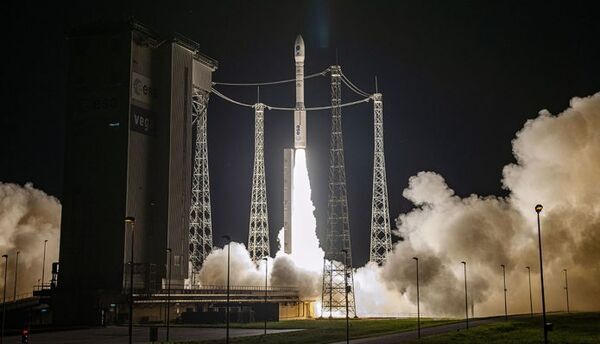
Arianespace gives a lift to the small-sat market with Vega’s SSMS debut
"With tonight’s successful Vega launch from the Spaceport in French Guiana, Arianespace has extended Europe’s access to space with a new capability to address the rapidly growing segment of small satellites. Lifting off from the Spaceport’s Vega Launch Complex at 10:51 p.m. local time in French Guiana on September 2 – the planned precise moment of launch – Vega deployed 40-plus small CubeSats and seven microsatellites using a new-design rideshare dispenser system for the Small Spacecraft Mission Service (SSMS). The satellite passengers on the SSMS Proof of Concept rideshare mission were released into Sun-synchronous orbits during a flight sequence lasting 1 hr. and 44 min. from liftoff to final separation, involving multiple deployments with the SSMS dispenser. These spacecraft will serve various applications – including Earth observation, telecommunications, science, technology and education." [...]
Outras Notícias

Samsung Begins Mass Production of 16Gb LPDDR5 DRAM at World’s Largest Semiconductor Line
"Samsung starts shipping industry's first third-gen 10nm-class (1z) EUV-based 16Gb LPDDR5 DRAM Following DRAM, new Pyeongtaek Line 2 to produce next-gen V-NAND and foundry solutions Samsung Electronics, the world leader in advanced memory technology, today announced that its second production line in Pyeongtaek, Korea, has commenced mass production of the industry’s first 16-gigabit (Gb) LPDDR5 mobile DRAM, using extreme ultraviolet (EUV) technology. Built on Samsung’s third-generation 10nm-class (1z) process, the new 16Gb LPDDR5 boasts the highest mobile memory performance and largest capacity to enable more consumers to enjoy the full benefits of 5G and AI features in next-generation smartphones. “The 1z-based 16Gb LPDDR5 elevates the industry to a new threshold, overcoming a major developmental hurdle in DRAM scaling at advanced nodes,” said Jung-bae Lee, executive vice president of DRAM Product & Technology at Samsung Electronics. “We will continue to expand our premium DRAM lineup and exceed customer demands, as we lead in growing the overall memory market.” Expanding Manufacturing Capacity in Pyeongtaek Complex Spanning more than 128,900 square meters (over 1.3 million square feet) – equivalent to about 16 soccer fields – Samsung’s Pyeongtaek Line 2 is the largest-scale semiconductor production line to date. The new Pyeongtaek line will serve as the key manufacturing hub for the industry’s most advanced semiconductor technologies, delivering cutting-edge DRAM followed by next-generation V-NAND and foundry solutions, while reinforcing the company’s leadership in the Industry 4.0 era. Fastest, Largest-capacity Mobile Memory Based on today’s most advanced (1z) process node, Samsung’s new 16Gb LPDDR5 is the first memory to be mass produced using EUV technology, providing the highest speed and largest capacity available in mobile DRAM." [...]
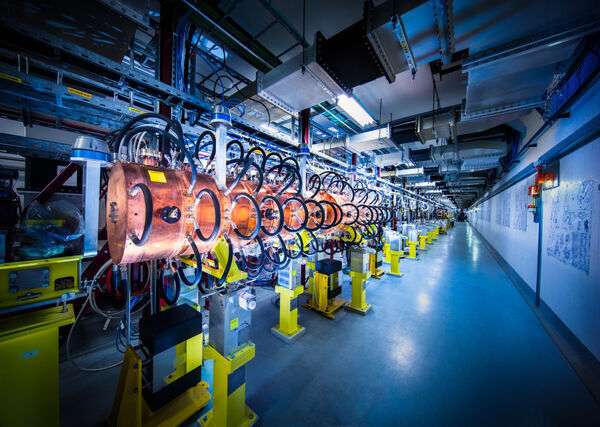
CERN’s newest accelerator awakens
"The CERN Control Centre (CCC) is abuzz once again. The second long shutdown (LS2) has come to an end for CERN’s newest accelerator – Linac 4 – and the accelerator complex’s slow awakening from a two-year repair-and-recuperation hibernation has begun. The three-week machine-development run until mid-August saw low-energy beams of negative hydrogen ions (H−) fly through the first part of the accelerator for the first time since it was connected to the PS Booster. On 20 August, the first beams at the nominal energy of 160 MeV were accelerated through the entire machine and into a dedicated beam dump located at the end of the linac. Over the coming months, the brand-new accelerator will finish being commissioned and will be made ready to deliver various beams to the PS Booster in December. CERN is famous for its circular accelerators, in particular the 27-kilometre-circumference Large Hadron Collider." [...]

Intel Launches World’s Best Processor for Thin-and-Light Laptops: 11th Gen Intel Core
"Intel launches 11th Gen Intel® Core™ processors with Intel® Iris® Xe graphics, the world’s best processors for thin-and-light laptops1, delivering up to 2.7x faster content creation2, more than 20% faster office productivity3 and more than 2x faster gaming plus streaming4 in real-world workflows over competitive products. Intel® Evo™ platform brand introduced for designs based on 11th Gen Intel Core processors with Intel Iris Xe graphics and verified through the Project Athena innovation program’s second-edition specification and key experience indicators (KEIs). More than 150 designs based on 11th Gen Intel Core processors are expected from Acer, Asus, Dell, Dynabook, HP, Lenovo, LG, MSI, Razer, Samsung and others. SANTA CLARA, Calif., Sept. 2, 2020 – Intel today unleashed a new era of laptop performance with the launch of its next-generation mobile PC processors and the evolution of its broad ecosystem partnerships that are propelling the mobile PC industry forward. New 11th Gen Intel Core processors with Intel Iris Xe graphics (code-named “Tiger Lake”) are the world’s best processors for thin-and-light laptops with unmatched capabilities for real-world productivity, collaboration, creation, gaming and entertainment across Windows and ChromeOS-based laptops. Leveraging Intel’s new SuperFin process technology, 11th Gen Intel Core processors optimize power efficiency with leading performance and responsiveness while running at significantly higher frequencies versus prior generations." [...]
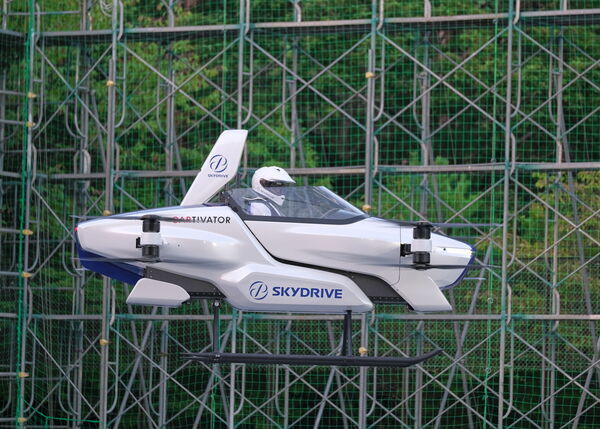
SkyDrive’s piloted eVTOL makes its first public flight
"SkyDrive conducted a public flight demonstration of its piloted SD-03 eVTOL on Aug. 25 — the first such demo of a “flying car” in Japan, the company said. The flight took place at the Toyota Test Field in Toyota City, which at 10,000 square meters (2.5 acres) is one of the largest test fields in Japan and home to the company’s development base. A pilot was at the controls for the approximately four-minute flight, but a computer-assisted control system helped ensure flight stability and safety, while technical staff at the field monitored flight conditions and performance at all times. SkyDrive announced earlier this year that it had completed an initial phase of crewed flight testing with its eVTOL prototype aircraft between December 2019 and March 2020. Compared to that prototype, the aircraft that flew this week has sleeker fairings in a pearl-white finish, “which was chosen to represent white birds and the floating clouds in the sky of users’ future,” according to a press release. “We are extremely excited to have achieved Japan’s first-ever manned flight of a flying car in the two years since we founded SkyDrive in 2018 with the goal of commercializing such aircraft,” stated SkyDrive CEO Tomohiro Fukuzawa." [...]
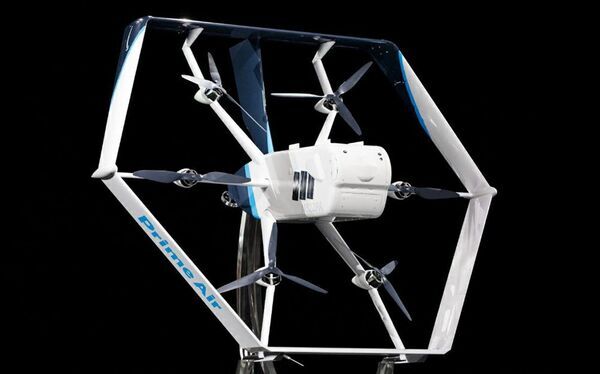
Amazon’s Drone Delivery Fleet Hits Milestone With FAA Clearance
"Retail behemoth Amazon.com Inc. took a big leap toward delivering goods from the sky by becoming one of only a handful of companies certified by the U.S. government to operate as a drone airline. The Federal Aviation Administration designated Amazon Prime Air an “air carrier,” the company said Monday. That allows Amazon to begin its first commercial deliveries in the U.S. under a trial program, using the high-tech devices it unveiled for that purpose last year. Amazon and its competitors must still clear some imposing regulatory and technical hurdles before small packages holding the likes of cat food or toothpaste can routinely be dropped at people’s homes. But the action shows that they’ve convinced the government they’re ready to operate in the highly regulated aviation sector. “This certification is an important step forward for Prime Air and indicates the FAA’s confidence in Amazon’s operating and safety procedures for an autonomous drone delivery service that will one day deliver packages to our customers around the world,” David Carbon, an Amazon vice president who oversees Prime Air, said in a statement." [...]

SpaceX launches 60 Starlink internet satellites, sticks rocket landing
"SpaceX delivered a new batch of its Starlink satellites into orbit today (Sept. 3) and nailed a rocket landing, following a few delays. A two-stage Falcon 9 rocket carrying a full load of 60 Starlink satellites lifted off at 8:46 a.m. EDT (1246 GMT) from Pad 39A at NASA’s Kennedy Space Center in Florida. The booster's first stage came back to Earth about 9 minutes after launch, landing on one of SpaceX's drone ships in the Atlantic Ocean. This was the third attempt to get this particular mission off the ground, following weather and data-review delays. The launch marks the first Starlink mission this month and SpaceX's 16th mission so far in 2020. The company’s fleet of flight-proven boosters has been busy this summer, with the California-based rocket builder reaching a new milestone on its previous Starlink flight: launching and landing the same first-stage booster six times." [...]
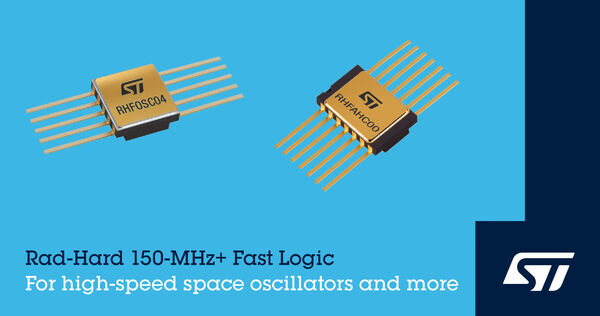
STMicroelectronics Accelerates Space Applications with 150MHz+ High-Speed Rad-Hard Logic
"STMicroelectronics has introduced the first two logic devices in a new high-speed, radiation-hardened family that brings 150MHz+ performance to space applications. The QML-V qualified RHFOSC04 (SMD15962F20207) integrated oscillator driver/divider and RHFAHC00 (SMD 5962F18202) quad NAND gate have more than twice the gate speed of typical rad-hard logic ICs to ensure faster response in high-frequency circuits. Designed with ST’s proprietary 130nm CMOS technology already proven throughout the space industry, the new devices combine their speed advantage with low operating current and a best-in-class radiation hardness with an RHA (Radiation Hardness Assurance) qualified TID2 at 300 krad (Si) and immunity to SEL and SET3 up to 125 MeV.cm2/mg. Their supply-voltage range of 1.8V-3.6V helps meet the tight power and energy restrictions typical on-board satellites and space vehicles. The RHFOSC04 combines the roles of multiple discrete logic components to drive a crystal oscillator directly, which simplifies circuit design and enhances stability while saving board space and increasing system reliability. The divider adds flexibility by providing nominal-frequency, divide-by-2, divide-by-4, and divide-by-8 outputs." [...]
Ciência e Tecnologia
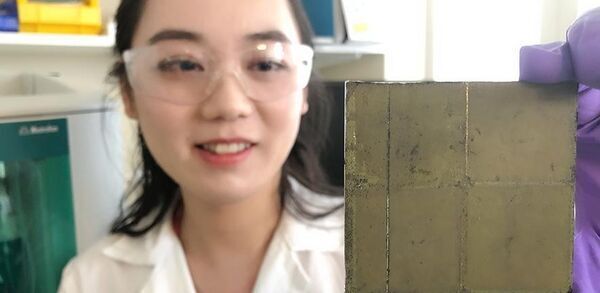
Wireless device makes clean fuel from sunlight, CO2 and water
"Researchers have developed a standalone device that converts sunlight, carbon dioxide and water into a carbon-neutral fuel, without requiring any additional components or electricity. We hope this technology will pave the way toward sustainable and practical solar fuel production Erwin Reisner The device, developed by a team from the University of Cambridge, is a significant step toward achieving artificial photosynthesis – a process mimicking the ability of plants to convert sunlight into energy. It is based on an advanced ‘photosheet’ technology and converts sunlight, carbon dioxide and water into oxygen and formic acid – a storable fuel that can be either be used directly or be converted into hydrogen. The results, reported in the journal Nature Energy, represent a new method for the conversion of carbon dioxide into clean fuels. The wireless device could be scaled up and used on energy ‘farms’ similar to solar farms, producing clean fuel using sunlight and water. Harvesting solar energy to convert carbon dioxide into fuel is a promising way to reduce carbon emissions and transition away from fossil fuels." [...]
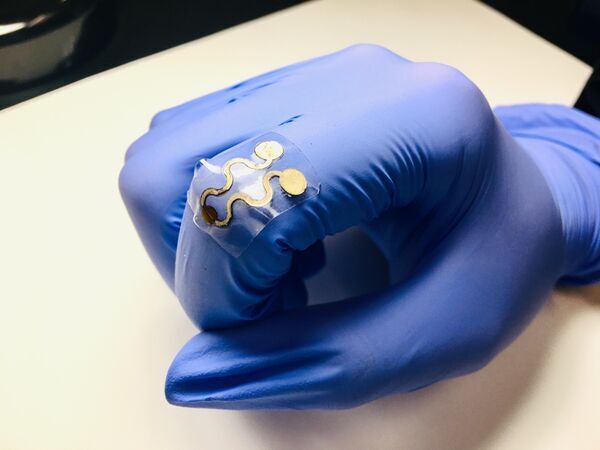
An improved wearable, stretchable gas sensor using nanocomposites
"A stretchable, wearable gas sensor for environmental sensing has been developed and tested by researchers at Penn State, Northeastern University and five universities in China. The sensor combines a newly developed laser-induced graphene foam material with a unique form of molybdenum disulfide and reduced-graphene oxide nanocomposites. The researchers were interested in seeing how different morphologies, or shapes, of the gas-sensitive nanocomposites affect the sensitivity of the material to detecting nitrogen dioxide molecules at very low concentration. To change the morphology, they packed a container with very finely ground salt crystals. Nitrogen dioxide is a noxious gas emitted by vehicles that can irritate the lungs at low concentrations and lead to disease and death at high concentrations. When the researchers added molybdenum disulfide and reduced graphene oxide precursors to the canister, the nanocomposites formed structures in the small spaces between the salt crystals." [...]
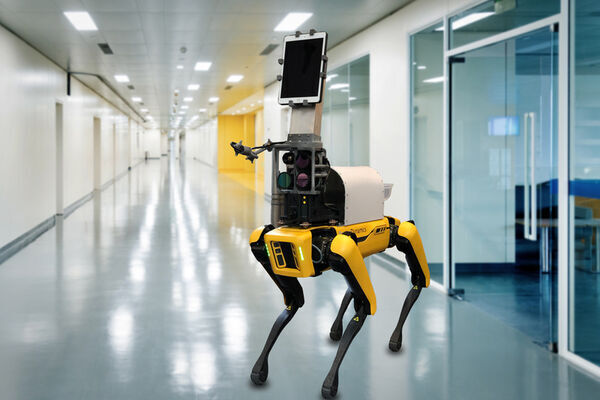
Robot takes contact-free measurements of patients’ vital signs
"Mobile system could reduce health care workers’ exposure to Covid-19 virus. During the current coronavirus pandemic, one of the riskiest parts of a health care worker’s job is assessing people who have symptoms of Covid-19. Researchers from MIT and Brigham and Women’s Hospital hope to reduce that risk by using robots to remotely measure patients’ vital signs. The robots, which are controlled by a handheld device, can also carry a tablet that allows doctors to ask patients about their symptoms without being in the same room. “In robotics, one of our goals is to use automation and robotic technology to remove people from dangerous jobs,” says Henwei Huang, an MIT postdoc. “We thought it should be possible for us to use a robot to remove the health care worker from the risk of directly exposing themselves to the patient.” Using four cameras mounted on a dog-like robot developed by Boston Dynamics, the researchers have shown that they can measure skin temperature, breathing rate, pulse rate, and blood oxygen saturation in healthy patients, from a distance of 2 meters." [...]
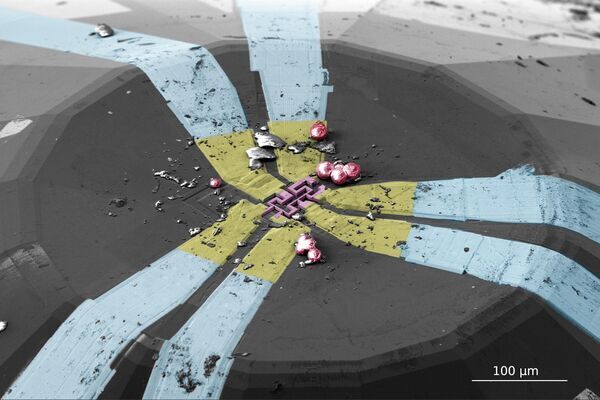
A topography of extremes
"On the track of unconventional superconductivity, researchers are charting unknown territory An international team of scientists from the Helmholtz-Zentrum Dresden-Rossendorf (HZDR), the Max Planck Institute for Chemical Physics of Solids, and colleagues from the USA and Switzerland have successfully combined various extreme experimental conditions in a completely unique way, revealing exciting insights into the mysterious conducting properties of the crystalline metal CeRhIn5. In the journal Nature Communications (DOI: 10.1038/s41467-020-17274-6), they report on their exploration of previously uncharted regions of the phase diagram of this metal, which is considered a promising model system for understanding unconventional superconductors. “First, we apply a thin layer of gold to a microscopically small single crystal. Then we use an ion beam to carve out tiny microstructures. At the ends of these structures, we attach ultra-thin platinum tapes to measure resistance along different directions under extremely high pressures, which we generate with a diamond anvil pressure cell. In addition, we apply very powerful magnetic fields to the sample at temperatures near absolute zero.” To the average person, this may sound like an overzealous physicist’s whimsical fancy, but in fact, it is an actual description of the experimental work conducted by Dr. Toni Helm from HZDR’s High Magnetic Field Laboratory (HLD) and his colleagues from Tallahassee, Los Alamos, Lausanne and Dresden." [...]

Molecular architecture: New class of materials for tomorrow's energy storage
"Researchers at the Technische Universität Berlin (TUB) have created a new family of semiconductors, the properties of which were investigated by the Helmholtz-Zentrum Berlin (HZB). The researchers christened the first member “TUB75”. The material belongs to the class called metal-organic frameworks, or MOFs for short, and could open up new opportunities for energy storage. The work was published in Advanced Materials. “TUB75 is the first semiconducting phosphonate MOF in the literature. It paves the way for a new family of semiconductors through its extremely rich structural chemistry”, says Gündoğ Yücesan." [...]
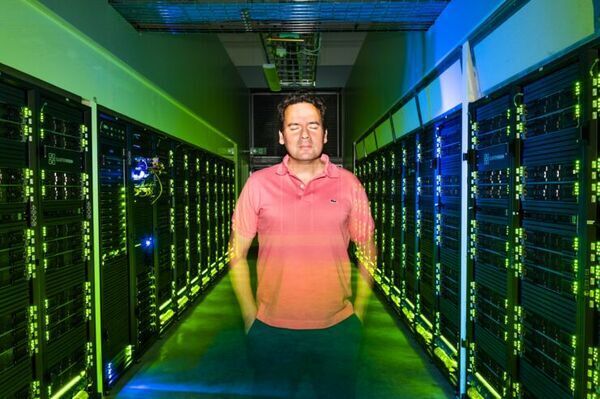
Researchers develop molecule to store solar energy
"Researchers at Linköping University have developed a molecule that absorbs energy from sunlight and stores it in chemical bonds. A possible long-term use of the molecule is to capture solar energy efficiently and store it for later consumption. The Earth receives many times more energy from the sun than we humans can use. This energy is absorbed by solar energy facilities, but one of the challenges of solar energy is to store it efficiently, such that the energy is available when the sun is not shining. This led scientists at Linköping University to investigate the possibility of capturing and storing solar energy in a new molecule. “Our molecule can take on two different forms: a parent form that can absorb energy from sunlight, and an alternative form in which the structure of the parent form has been changed and become much more energy-rich, while remaining stable." [...]
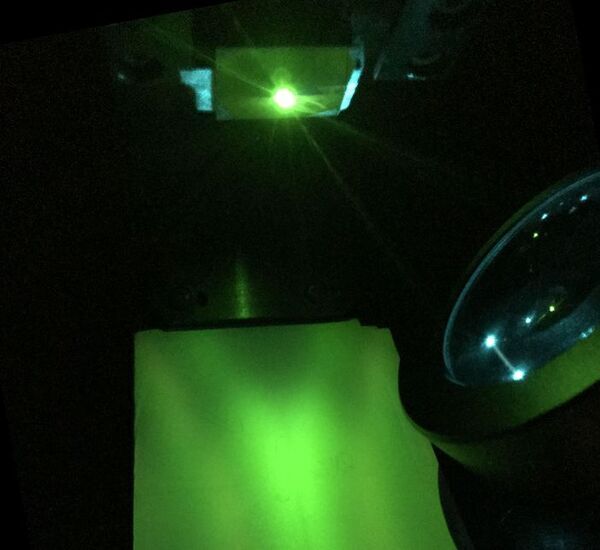
Continuous and stable lasing achieved from low-cost perovskites at room temperature
"Suppression of long-lived energetic states called triplet excitons shown to be key for preventing the “lasing death” that has been limiting long operation An international team of researchers led by Kyushu University and Changchun Institute of Applied Chemistry, Chinese Academy of Sciences, has demonstrated stable, continuous lasing at room temperature for over an hour from a class of low-cost materials called perovskites by finally overcoming a phenomenon that has so far prevented such long operation. Used in everything from manufacturing and research to communications and entertainment because of their highly uniform light emission, lasers are often classified by the material in them that converts input energy—usually either light or electricity—into light, with common materials including inorganic and organic semiconductors, gases, and crystals. Recent developments in a class of materials known as perovskites have made them attractive for lasers because they can be fabricated from solution at low cost to have tunable colors and excellent stability, but a phenomenon termed lasing death causes lasing under constant operation at room temperature to stop after a few minutes for reasons that have been unclear. Now, researchers from Kyushu University and Changchun Institute of Applied Chemistry report in the journal Nature that they have managed to overcome lasing death in quasi-2D perovskites by taking into consideration energetic states called triplet excitons. “The realization of lasers based on organic semiconductors has primarily been impeded by losses caused by the buildup of triplets. However, the situation for triplets in quasi-2D perovskites had yet to be fully considered,” says Chuanjiang Qin, professor of Changchun Institute of Applied Chemistry, Chinese Academy of Sciences, and lead researcher on the study." [...]

Your paper notebook could become your next tablet
"Innovators from Purdue University hope their new technology can help transform paper sheets from a notebook into a music player interface and make food packaging interactive. Purdue engineers developed a simple printing process that renders any paper or cardboard packaging into a keyboard, keypad or other easy-to-use human-machine interfaces. This technology is published in the Aug. 23 edition of Nano Energy. “This is the first time a self-powered paper-based electronic device is demonstrated,” said Ramses Martinez, an assistant professor in Purdue’s School of Industrial Engineering and in the Weldon School of Biomedical Engineering in Purdue’s College of Engineering. “We developed a method to render paper repellent to water, oil and dust by coating it with highly fluorinated molecules. This omniphobic coating allows us to print multiple layers of circuits onto paper without getting the ink to smear from one layer to the next one.” Martinez said this innovation facilitates the fabrication of vertical pressure sensors that do not require any external battery, since they harvest the energy from their contact with the user." [...]

Ambient light alters refraction in 2D material
"Rice researchers find effect that could aid 3D displays, virtual reality, self-driving vehicles Microscopic crystals in tantalum disulfide have a starring role in what could become a hit for 3D displays, virtual reality and even self-driving vehicles. A two-dimensional array of the material has unique optical characteristics that can be controlled in ambient conditions and under general illumination, according to engineer Gururaj Naik and graduate student Weijian Li of Rice’s Brown School of Engineering. When they pull a two-dimensional sliver off a bulk sample (with that tried-and-true tool, adhesive tape) and shine light on it, the layered material rearranges the charge density waves of electrons that flow through, altering its refractive index. Light emitted along the affected axis changes its color depending on the strength of the light that goes in. The discovery is detailed in the American Chemical Society journal Nano Letters. “We need an optical material that can change the refractive index for applications like virtual reality, 3D displays, optical computers and lidar, which is necessary for autonomous vehicles,” said Naik, an assistant professor of electrical and computer engineering." [...]
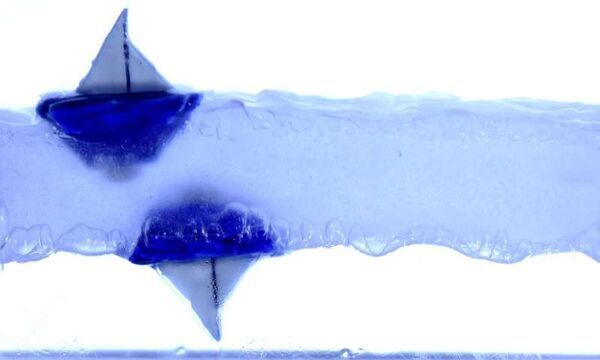
Floating a boat on the underside of a liquid
"A team of researchers from Institut Langevin and Sorbonne Université has shown that it is possible to float boats on both the top and underside of a suspended fluid. In their paper published in the journal Nature, the group describes experiments they conducted with levitating fluids and what they learned from them. Vladislav Sorokin and Iliya Blekhman with the Russian Academy of Science have published a News & Views piece in the same journal issue outlining the work by the team in France. Prior research has shown that if you put a liquid into a tub, it will fill in the bottom of the tub—but if you pick up the tub and shake it vigorously up and down, the fluid will rise from the bottom of the tub and hover near the top. This is due to vibrations that compress the air below the fluid, preventing it from falling to the bottom. In this new effort, the researchers have found that there is something else that can be done using the same setup—float a boat on the underside of the levitating fluid." [...]
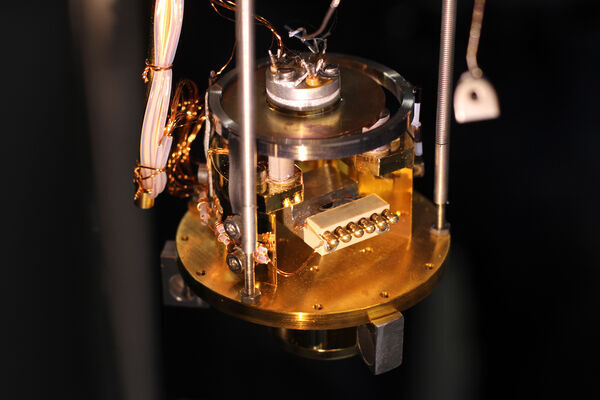
Autonomous Robot Plays with NanoLEGO
"Scientists are developing an autonomous artificial intelligence system that can selectively grip and move individual molecules Molecules are the building blocks of everyday life. Many materials are composed of them, a little like a LEGO model consists of a multitude of different bricks. But while individual LEGO bricks can be simply shifted or removed, this is not so easy in the nanoworld. Atoms and molecules behave in a completely different way to macroscopic objects and each brick requires its own “instruction manual”. Scientists from Jülich and Berlin have now developed an artificial intelligence system that autonomously learns how to grip and move individual molecules using a scanning tunnelling microscope. The method, which has been published in Science Advances, is not only relevant for research but also for novel production technologies such as molecular 3D printing." [...]
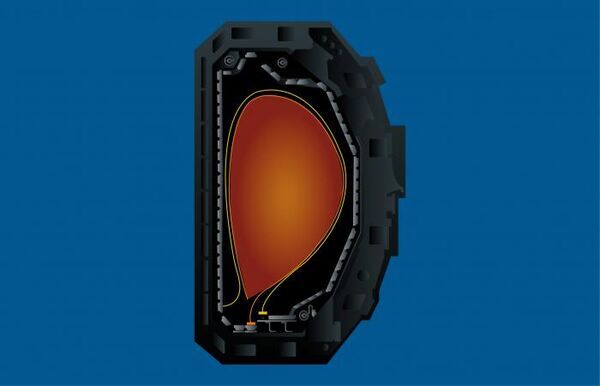
Tungsten isotope helps study how to armor future fusion reactors
"The inside of future nuclear fusion energy reactors will be among the harshest environments ever produced on Earth. What’s strong enough to protect the inside of a fusion reactor from plasma-produced heat fluxes akin to space shuttles reentering Earth’s atmosphere? Zeke Unterberg and his team at the Department of Energy’s Oak Ridge National Laboratory are currently working with the leading candidate: tungsten, which has the highest melting point and lowest vapor pressure of all metals on the periodic table, as well as very high tensile strength — properties that make it well-suited to take abuse for long periods of time. They’re focused on understanding how tungsten would work inside a fusion reactor, a device that heats light atoms to temperatures hotter than the sun’s core so that they fuse and release energy. Hydrogen gas in a fusion reactor is converted into hydrogen plasma — a state of matter that consists of partially ionized gas—that is then confined in a small region by strong magnetic fields or lasers. “You don’t want to put something in your reactor that only lasts a couple of days,” said Unterberg, a senior research scientist in ORNL’s Fusion Energy Division." [...]

Laser jolts microscopic electronic robots into motion
"In 1959, former Cornell physicist Richard Feynman delivered his famous lecture “There’s Plenty of Room at the Bottom,” in which he described the opportunity for shrinking technology, from machines to computer chips, to incredibly small sizes. Well, the bottom just got more crowded. A Cornell-led collaboration has created the first microscopic robots that incorporate semiconductor components, allowing them to be controlled – and made to walk – with standard electronic signals. These robots, roughly the size of paramecium, provide a template for building even more complex versions that utilize silicon-based intelligence, can be mass produced, and may someday travel through human tissue and blood. The collaboration is led by Itai Cohen, professor of physics, Paul McEuen, the John A. Newman Professor of Physical Science – both in the College of Arts and Sciences – and their former postdoctoral researcher Marc Miskin, who is now an assistant professor at the University of Pennsylvania. The team’s paper, “Electronically Integrated, Mass-Manufactured, Microscopic Robots,” published Aug. 26 in Nature." [...]
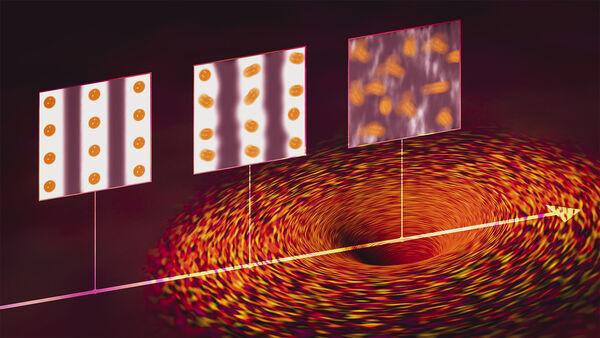
SLAC researchers find evidence for quantum fluctuations near a quantum critical point in a superconductor
"Theory suggests that quantum critical points may be analogous to black holes as places where all sorts of strange phenomena can exist in a quantum material. Now scientists are trying to pin down where this particular quantum critical point might be. Among all the curious states of matter that can coexist in a quantum material, jostling for preeminence as temperature, electron density and other factors change, some scientists think a particularly weird juxtaposition exists at a single intersection of factors, called the quantum critical point or QCP. “Quantum critical points are a very hot issue and interesting for many problems,” says Wei-Sheng Lee, a staff scientist at the Department of Energy’s SLAC National Accelerator Laboratory and investigator with the Stanford Institute for Materials and Energy Sciences (SIMES). “Some suggest that they’re even analogous to black holes in the sense that they are singularities – point-like intersections between different states of matter in a quantum material – where you can get all sorts of very strange electron behavior as you approach them.” Lee and his collaborators reported in Nature Physics today that they have found strong evidence that QCPs and their associated fluctuations exist. They used a technique called resonant inelastic X-ray scattering (RIXS) to probe the electronic behavior of a copper oxide material, or cuprate, that conducts electricity with perfect efficiency at relatively high temperatures." [...]
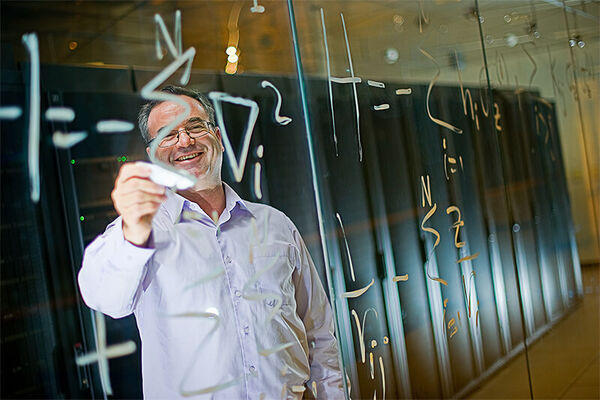
New theory hints at more efficient way to develop quantum algorithms
"In 2019, Google claimed it was the first to demonstrate a quantum computer performing a calculation beyond the abilities of today’s most powerful supercomputers. But most of the time, creating a quantum algorithm that stands a chance at beating a classical computer is an accidental process, Purdue University scientists say. To bring more guidance to this process and make it less arbitrary, these scientists developed a new theory that may eventually lead to more systematic design of quantum algorithms. The new theory, described in a paper published in the journal Advanced Quantum Technologies, is the first known attempt to determine which quantum states can be created and processed with an acceptable number of quantum gates to outperform a classical algorithm. Physicists refer to this concept of having the right number of gates to control each state as “complexity.” Since the complexity of a quantum algorithm is closely related to the complexity of quantum states involved in the algorithm, the theory could therefore bring order to the search for quantum algorithms by characterizing which quantum states meet that complexity criteria. An algorithm is a sequence of steps to perform a calculation." [...]

Tiny tweezer developed at Vanderbilt can trap molecules on a nanoscale, creating powerful research capabilities into cancer metastasis, neurodegenerative diseases
"In 2018, one-half of the Nobel Prize was awarded to Arthur Ashkin, the physicist who developed optical tweezers, the use of a tightly focused laser beam to isolate and move micron-scale objects (the size of red blood cells). Now Justus Ndukaife, assistant professor of electrical engineering at Vanderbilt University, has developed the first-ever opto-thermo-electrohydrodynamic tweezers, optical nanotweezers that can trap and manipulate objects on an even smaller scale. The article, “Stand-off trapping and manipulation of sub-10 nm objects and biomolecules using opto-thermo-electrohydrodynamic tweezers” was published online in the journal Nature Nanotechnology on August 31. The article was authored by Ndukaife and graduate students Chuchuan Hong and Sen Yang, who are conducting research in Ndukaife’s lab. Micron-scale optical tweezers represent a significant advancement in biological research but are limited in the size of the objects they can work with. This is because the laser beam that acts as the pincer of an optical tweezer can only focus the laser light to a certain diameter (about half the laser’s wavelength)." [...]
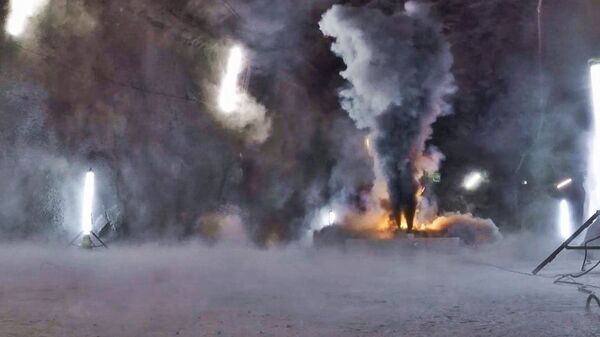
How dangerous are burning electric cars?
"What happens if an electric car burns in a road tunnel or an underground car park? In the Hagerbach test tunnel in Switzerland, Empa researchers and tunnel safety expert Lars Derek Mellert set fire to battery cells of electric cars, analyzed the distribution of soot and smoke gases and the chemical residues in the extinguishing water. There' s a loud bang, and then it starts: A battery module of an electric car is on fire in the Hagerbach test tunnel. A video of the test impressively shows the energy stored in such batteries: Meter-long flames hiss through the room and produce enormous amounts of thick, black soot. The visibility in the previously brightly lit tunnel section quickly approaches zero. After a few minutes, the battery module is completely burnt out." [...]
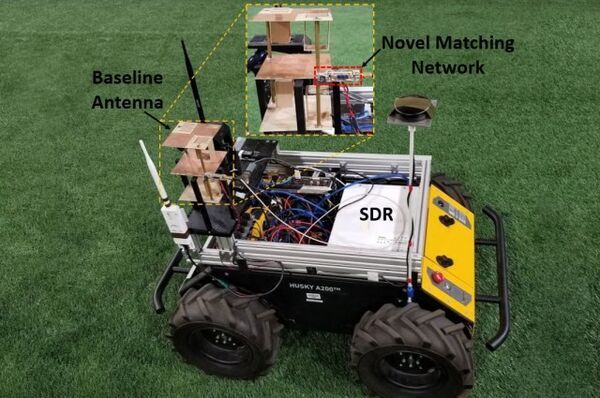
Miniature antenna enables robotic teaming in complex environments
"A new, miniature, low-frequency antenna with enhanced bandwidth will enable robust networking among compact, mobile robots in complex environments. In a collaborative effort between the U.S. Army Combat Capabilities Development Command’s Army Research Laboratory and the University of Michigan, researchers developed a novel design approach that improves upon limitations of conventional antennas operating at low frequencies—demonstrating smaller antennas that maintain performance. Impedance matching is a key aspect of antenna design, ensuring that the radio transmits power through the antenna with minimal reflections while in transmit mode—and that when the antenna is in receive mode, it captures power to efficiently couple to the radio over all frequencies within the operational bandwidth. “Conventional impedance matching techniques with passive components—such as resistors, inductors and capacitors—have a fundamental limit, known as the Chu-Wheeler limit, which defines a bound for the maximum achievable bandwidth-efficiency product for a given antenna size,” said Army researcher Dr. Fikadu Dagefu. “In general, low-frequency antennas are physically large, or their miniaturized counterparts have very limited bandwidth and efficiency, resulting in higher power requirement.” With those challenges in mind, the researchers developed a novel approach that improves bandwidth and efficiency without increasing size or changing the topology of the antenna. “The proposed impedance matching approach applies a modular active circuit to a highly miniaturized, efficient, lightweight antenna—overcoming the aforementioned Chu-Wheeler performance limit,” said Army postdoctoral researcher Dr. Jihun Choi." [...]

Revolutionary quantum breakthrough paves way for safer online communication
"The world is one step closer to having a totally secure internet and an answer to the growing threat of cyber-attacks, thanks to a team of international scientists who have created a unique prototype which could transform how we communicate online. The invention led by the University of Bristol, revealed today in the journal Science Advances, has the potential to serve millions of users, is understood to be the largest-ever quantum network of its kind, and could be used to secure people’s online communication, particularly in these internet-led times accelerated by the COVID-19 pandemic. By deploying a new technique, harnessing the simple laws of physics, it can make messages completely safe from interception while also overcoming major challenges which have previously limited advances in this little used but much-hyped technology. Lead author Dr Siddarth Joshi, who headed the project at the university’s Quantum Engineering Technology (QET) Labs, said: “This represents a massive breakthrough and makes the quantum internet a much more realistic proposition. Until now, building a quantum network has entailed huge cost, time, and resource, as well as often compromising on its security which defeats the whole purpose.” “Our solution is scalable, relatively cheap and, most important of all, impregnable. That means it’s an exciting game changer and paves the way for much more rapid development and widespread rollout of this technology.” The current internet relies on complex codes to protect information, but hackers are increasingly adept at outsmarting such systems leading to cyber-attacks across the world which cause major privacy breaches and fraud running into trillions of pounds annually." [...]

New Room-Temperature Liquid-Metal Battery Could Be the Path to Powering the Future
"Researchers in the Cockrell School of Engineering at The University of Texas at Austin have built a new type of battery that combines the many benefits of existing options while eliminating their key shortcomings and saving energy. Most batteries are composed of either solid-state electrodes, such as lithium-ion batteries for portable electronics, or liquid-state electrodes, including flow batteries for smart grids. The UT researchers have created what they call a “room-temperature all-liquid-metal battery,” which includes the best of both worlds of liquid- and solid-state batteries. Solid-state batteries feature significant capacity for energy storage, but they typically encounter numerous problems that cause them to degrade over time and become less efficient. Liquid-state batteries can deliver energy more efficiently, without the long-term decay of sold-state devices, but they either fall short on high energy demands or require significant resources to constantly heat the electrodes and keep them molten. The metallic electrodes in the team’s battery can remain liquefied at a temperature of 20 degrees Celsius (68 degrees Fahrenheit), the lowest operating temperature ever recorded for a liquid-metal battery, according to the researchers." [...]
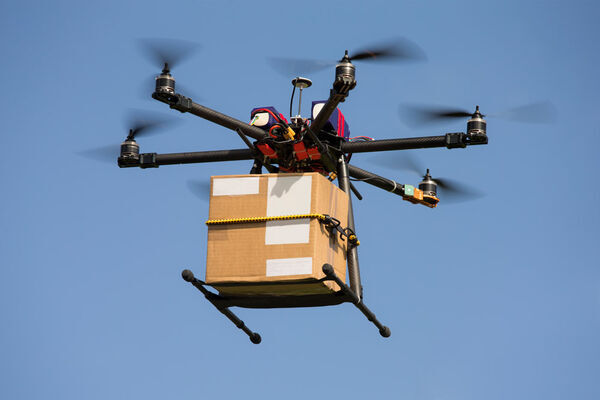
Researchers Explore How Retail Drone Delivery May Change Logistics Networks
"Researchers at The University of Texas at Dallas say drone technology has the potential to be a genuine game changer in the retail industry, with its promise to enable retailers to offer unheard-of delivery lead times and near-perfect delivery-time customization adaptability. In a new study, recently published online in Production and Operations Management, three faculty members from the Naveen Jindal School of Management explored how drone delivery could change retail logistics networks. The paper focuses on the use of customer-facing delivery centers, also known as last-mile warehouses. Dr. Milind Dawande, professor of operations management and one of the paper’s co-authors, said last-mile retail delivery via drones is being viewed as a truly disruptive technology. Retailers worldwide are pursuing approaches to enable faster delivery, and drones arguably represent the most encouraging technological innovation toward this goal, he said. The study found that both the number of last-mile warehouses and the delivery speed of the drones will increase as technology matures." [...]
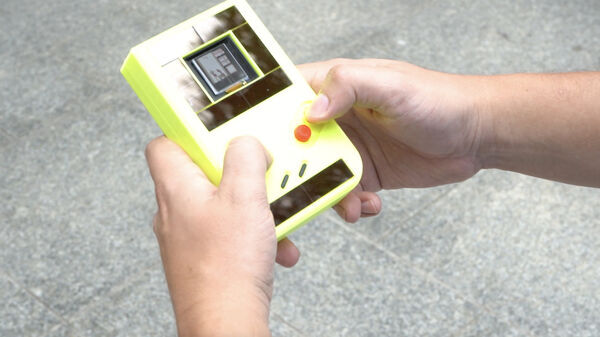
Battery-free Game Boy runs forever
"Button pressing and solar energy power the retro gaming device A hand-held video game console allowing indefinite gameplay might be a parent’s worst nightmare. But this Game Boy is not just a toy. It’s a powerful proof-of-concept, developed by researchers at Northwestern University and the Delft University of Technology (TU Delft) in the Netherlands, that pushes the boundaries of battery-free intermittent computing into the realm of fun and interaction. It is also another step toward sustainable technology. “It’s the first battery-free interactive device that harvests energy from user actions,” said Northwestern’s Josiah Hester, who co-led the research. “When you press a button, the device converts that energy into something that powers your gaming.” “Sustainable gaming will become a reality, and we made a major step in that direction — by getting rid of the battery completely,” said TU Delft’s Przemyslaw Pawelczak, who co-led the research with Hester." [...]
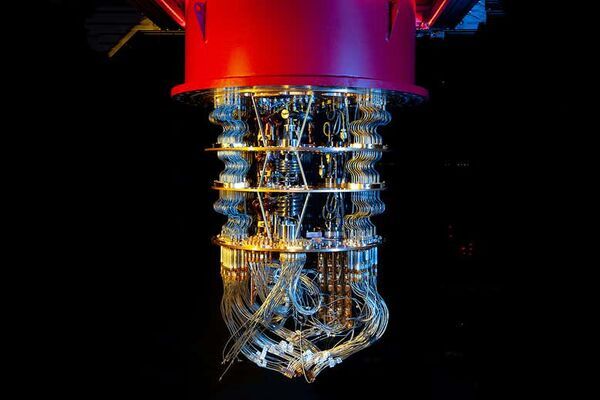
Google performed the first quantum simulation of a chemical reaction
"Google researchers have used a quantum computer to simulate a chemical reaction for the first time. The reaction is a simple one, but this marks a step towards finding a practical use for quantum computers. Because atoms and molecules are systems governed by quantum mechanics, quantum computers are expected to be the best way to precisely simulate them. These computers use quantum bits, or qubits, to store information and perform calculations. However, quantum computers have difficulty achieving the precision needed to simulate large atoms or chemical reactions. A team at Google has used the company’s Sycamore device to perform the first accurate quantum simulation of a chemical reaction." [...]

Heaviest Black Hole Merger is Among Three Recent Gravitational Wave Discoveries
"University of Maryland physicists help identify merging black holes that may redefine size limits for collapsed stars Scientists observed what appears to be a bulked-up black hole tangling with a more ordinary one. The research team, which includes physicists from the University of Maryland, detected two black holes merging, but one of the black holes was 1 1/2 times more massive than any ever observed in a black hole collision. The researchers believe the heavier black hole in the pair may be the result of a previous merger between two black holes. This type of hierarchical combining of black holes has been hypothesized in the past but the observed event, labeled GW190521, would be the first evidence for such activity. The Laser Interferometer Gravitational-Wave Observatory (LIGO) Scientific Collaboration (LSC) and Virgo Collaboration announced the discovery in two papers published September 2, 2020, in the journals Physical Review Letters and Astrophysical Journal Letters. The scientists identified the merging black holes by detecting the gravitational waves—ripples in the fabric of space-time—produced in the final moments of the merger." [...]
Projetos Maker
Diversos Projetos interessantes.

Recordable Cardboard Robot Arm
"A robotic arm made from easily available materials that can record and replay positions. This is a simple robotic arm that can record and replay positions. It is made from easily available materials, like cardboard and hot glue, which makes it easy to build. You control the arm with a graphical interface on the computer that sends data to the Arduino that controls the arm. There are sliders to control each servo, and buttons to record positions and replay what you've recorded. You can also save and open past recordings." [...]

There oughta be an irrigation system
"As you will see, just a simple system that turns the water on or off was not sufficient. I will show you all aspects of this Arduino based system in this article and provide the source code. The difference to basic automated watering There are plenty of projects out there that automate irrigation. Many focus on the problem of automatically reacting to dry soil by opening a single valve, but a fully automated system with one valve is not what I want for my lawn. I do not want the sprinklers to turn on unexpectedly and I had to solve a different type of problem: Managing a specific irrigation program with individual control over each sprinkler. For my setup there are two problems I had to address." [...]
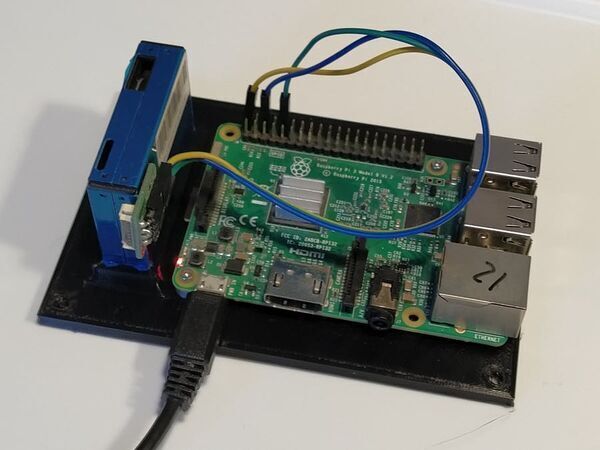
Smoke Measuring Station
"With recent wildfires in California, the outdoor air quality here is changing very quickly*. I created a simple Raspberry Pi station that allows you to watch the PM levels in real time in your browser. With the Raspberry Pi W, you can easily build the station under 30USD. It's obviously pretty barebones. The goal was for it to be quick to re-create, and for the code to be easily readable rather than to have a ton of features :) HW Setup All you need is: Raspberry Pi (pretty much any model) PMS7003 sensor 3 jumper wires" [...]
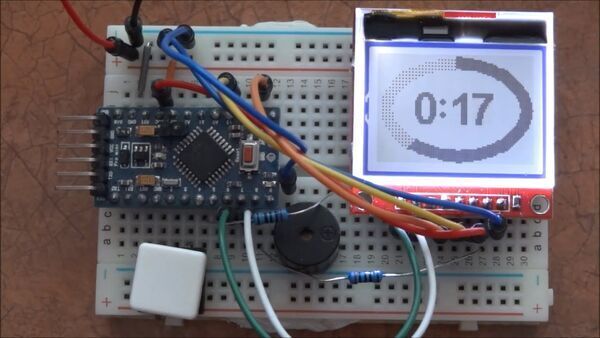
HX1230_CountdownTimer
"LowPower Arduino Countdown Timer Features: - the timer is always enabled and remains ready in deep sleep mode - low power modes used as often as possible to save energy - 500mAh LiPo cell should last for 2-3 years depending of how often the timer will be actually used - backlight typically is used only for 15 seconds, can be removed completely - deep sleep counter is used in countdown mode to save energy, it is not very accurate, can be replaced by regular sleep in case of issues - could't decide which font should be used so finally there are 4 looks (4 fonts, 2 progress indicators) BoM: - Arduino Pro Mini - HX1230 96x68 pixel LCD - button - buzzer or mini speaker - 100ohm resistor - 2 pcs" [...]
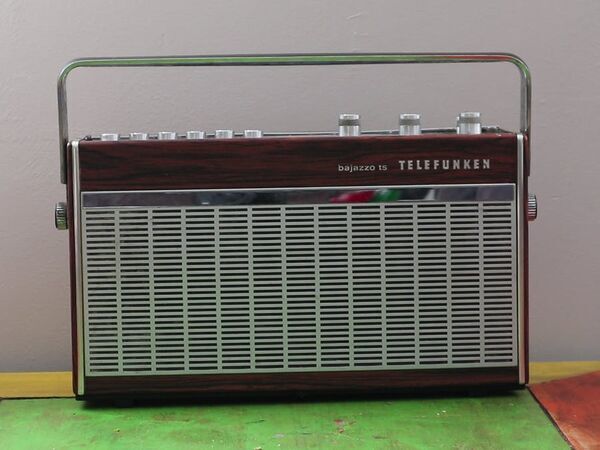
The Interactive Storytelling Radio
"In this project we convert a neat looking radio into a voice-enabled, interactive storyteller. Future, here we come! Like most retrofitting projects, this one starts with some old electronics, to be precise, a Bjazzo Ts by Telefunken, made sometime during the 1960's in West-Germany. First up is determining what's reusable. The best way to find out is by disassembling our vintage tech. This step is different for every device, but removing all screws you encounter is a great start." [...]
MIDI-Controlled Slide Whistle
"Uses an Arduino Due and a stepper motor + driver to control a slide whistle made of 3d printed parts and PVC pipe. Laser-cut base plate. A project that uses a 3d printed rack-and-pinion, blower fan, an Arduino Due, and a laser-cut base plate in a slide whistle assembly. Project is functional, and mostly-complete, but can use a little bit of tidying-up, It may eventually incorporate limit switch to define a home position (currently requires manual homing). This project was really fun, and kind of evolved in a very rambling sort of way. It started off in a completely different direction - the plan was to get a reed-based instrument working." [...]
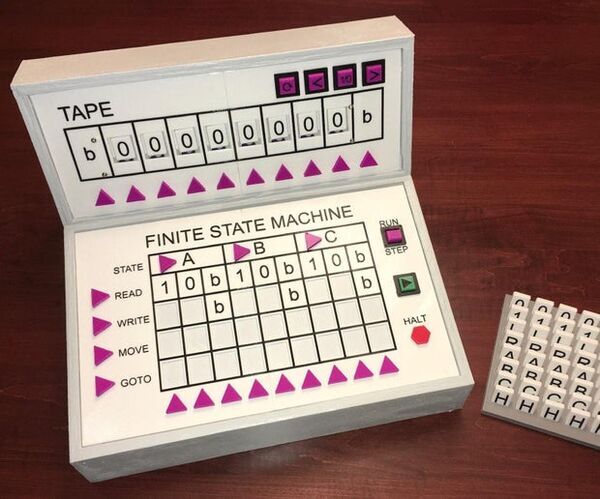
TMD-1: a Turing Machine Demonstrator
"You can find numerous Turing machine implementations on the internet that are absolutely stunning. The makers of these devices often set lofty goals for themselves, like "mechanical only solutions", which they met and exceeded with aplomb. In my humble opinion though, the complexity of these excellent and imaginative solutions often detracted from the understanding of what a Turing machine actually does. So my approach with this project from the onset was to demonstrate the idea of a Turing machine with as much clarity as possible. I tried to build a machine that is simple to program and easy to understand. I guess that was my lofty goal for this project." [...]

Inside the HP Nanoprocessor: a high-speed processor that can't even add
"The Nanoprocessor is a mostly-forgotten processor developed by Hewlett-Packard in 1974 as a microcontroller for their products. Strangely, this processor couldn't even add or subtract, probably why it was called a nanoprocessor and not a microprocessor. Despite this limitation, the Nanoprocessor powered numerous Hewlett-Packard devices ranging from interface boards and voltmeters to spectrum analyzers and data capture terminals. The Nanoprocessor's key feature was its low cost and high speed: Compared against the contemporary Motorola 6800, the Nanoprocessor cost $15 instead of $360 and was an order of magnitude faster for control tasks. Recently, the six masks used to manufacture the Nanoprocessor were released by Larry Bower, the chip's designer, revealing details about its design. The masks were carefully cleaned and scanned by The CPU Shack, and stitched by Antoine Bercovici." [...]
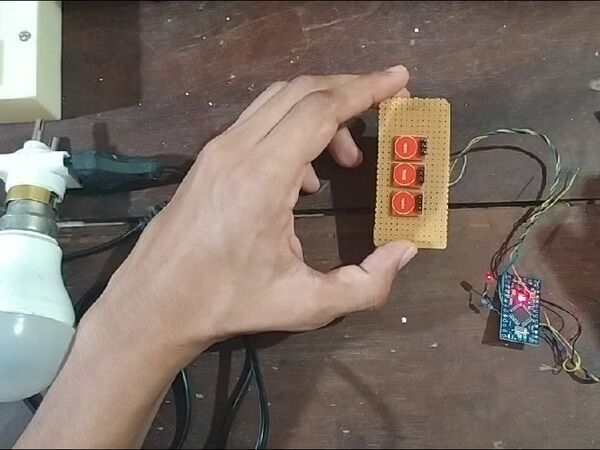
Gest-R: A Multi-Purpose No Touch Switch
"Gest-R is state of the art gesture switch made to elegantly replace normal electrical switches. Introduction We often come across situations where we have to switch on and off devices in a public space, like fan in an office or lights in your class room. Having such common switches to touch can have a negative impact on our efforts to counter corona. That is why I thought of a gesture switch that can be operated exactly as a traditional switch but comes with some bells and whistles. Gest-R (pronounce it as 'gesture') is a multi purpose 'no touch' switch in the same form factor of an electrical switch. It can be regarded as a premium switch but is in fact very affordable and unlike other non-contact solutions (like IR distance sensors) extremely power efficient." [...]

Homemade 3 in 1 CNC (Router, 3D Printer & Laser Engraver)
"his is by far the most longest-running build I have ever made and some improvement always left here and there. But overall said that the machine is running fine without giving any trouble. My main objective is always to educate people about how to make things and when people give some feedback that always feels good. Sometimes it's good and sometimes bad but frankly said I welcome all comments. I have very little experience with electronics and this is the only part which I feared a lot and sometimes that fear overcomes. That's why you see the almost negligible amount of electronics build over my channel but I am still on the learning stage and hopefully, someday I post something unique in electronics as well." [...]
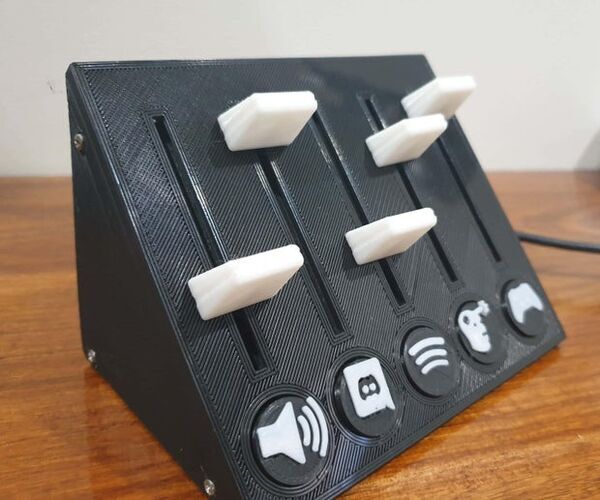
Deej Box - 5 Sliders
"This is my take on the Deej project that allows you to control PC program volumes individually and is fully configurable to individual needs very easily. My design features 5 sliders with magnetic, swappable badges to identify each slider. It is constructed from 3 main 3D printed parts and features a clean faceplate, with screws only visible on the sides. Supplies: - 20x M2 6mm screws - Mini B USB cable - Arduino Nano (or other board with 5+ analog pins) - ~1m hookup wire (26AWG was used) - 5x Linear Potentiometers - Used here - 10x 5mmx1mm magnet discs - 3D printed parts - STL's provided - Soldering Iron - Super glue" [...]
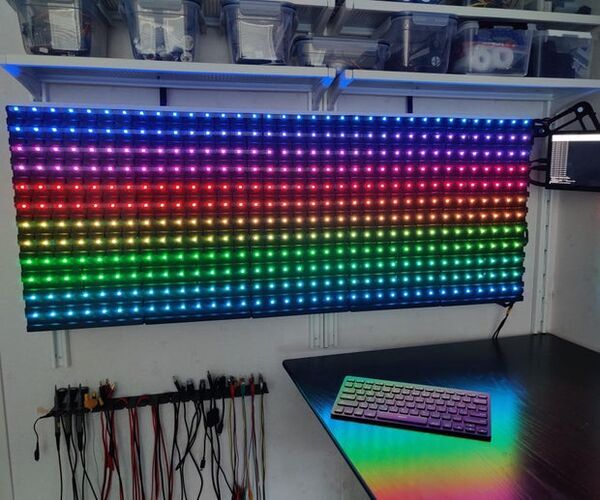
The Ultimate Component Storage System
"The Ultimate Component Storage System is a unique solution for organizing and storing electronic components. The custom software allows for cataloging of components with a built-in search function to gain quick access to specific components. LEDs above each drawer are used to indicate the position and status of individual, or a group, of components. Supplies: 2 x 5V @ 3A USB Power Supply 1 x Raspberry Pi 4 Model B 1 x 8.9" 1920x1200 IPS Touch Display 1 x WS2812b LED-Strip, 30LED/m All files for this project can be found on my GitHub: https://github.com/APTechnologies/The-Ultimate-Component-Storage-System" [...]

Store Your Headphones in Style
"I really love my different headphones. However, when you have just two ears like me you will likely only use one pair of them at most at a time. Therefore I want to show you in this instructable how you can store all your unused headphones in style. I will show you how you can use a glass headphone stand, some LED's and a 3D printer to create an awesome illuminated Headphone throne (the glowing effect is way better in reality than on pictures)! So, let's ago! Supplies: Parts: Glass Head Circular LED's (6 rings or 110mm) PSU (5V 4A) Cables Prototype PCB Filament ESP8266 (D1 mini) Voltage Level Converter 3-pin LED connector (male and female) 3V3 Relay Magnets (height: 2mm, diameter: 5mm) barrel jack [Optional: for easier disconnections] JST 2-pin connector Software: WLED Tools: 3D-printer hot glue (gun) " [...]
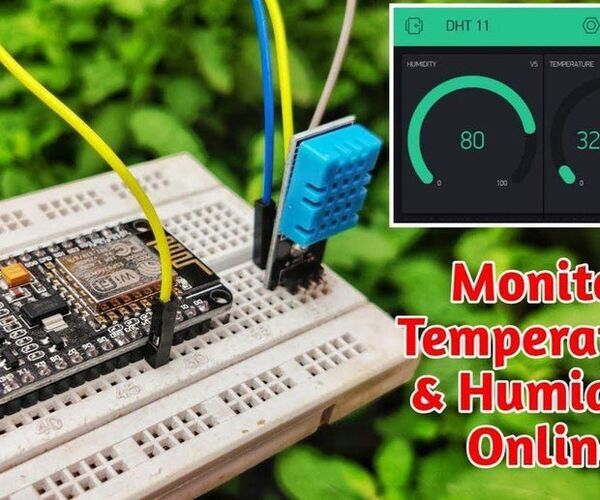
Room Temperature Over Internet With BLYNK ESP8266 & DHT11
"Hi Guys, Today we will make a room temperature monitor, which we can use to monitor our room from anywhere in the world and to do that we will use a BLYNK IoT plateform and we will use DHT11 to read the room temperature we will use a ESP8266 to access the internet and it will send that temperature data to the BLYNK server. " [...]
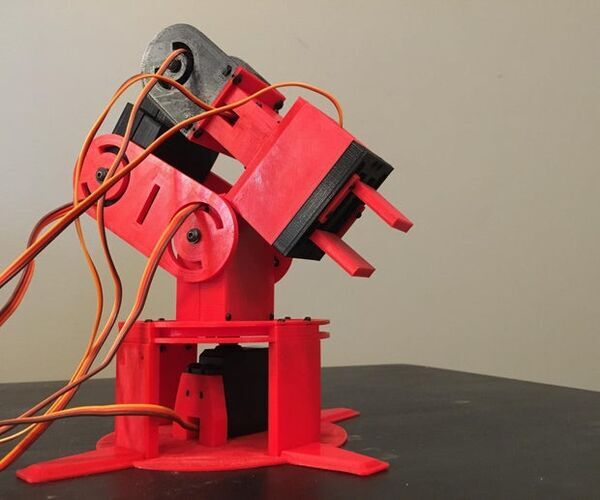
3D Printed Arduino Based Robotic Arm
"One year, I received a robotic arm kit for Christmas made out of acrylic parts and controlled with an Arduino. I put it together and uploaded the code to the Arduino board, only to be disappointed with its performance. I spend a good deal of time troubleshooting it, but I didn't have any success. Finally, I put the kit aside and pursued other projects. A few months ago, I came back to the robotic arm kit and figured out what the issues were. If I did my research correctly, most servo motors draw about an amp of current." [...]
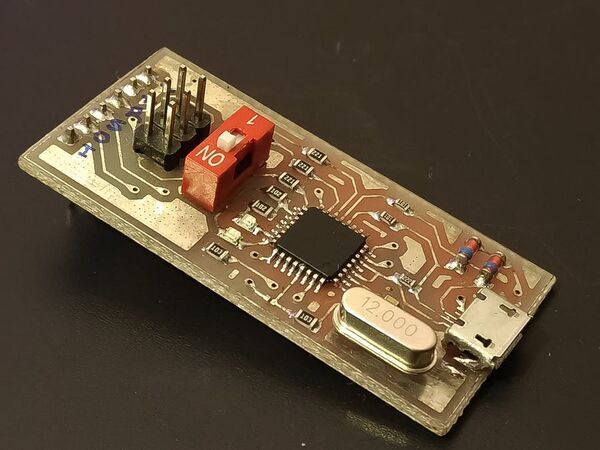
Breadboard Friendly USBASP
"The well known USBasp programmer, with PCB redesigned to fit better on a breadboard, switches instead of jumpers, and an Arduino ISP header. The well known open world AVR programmer needs no introduction. It's easy, cheap, open source, fast and of course, it as a USB. So no wonder that a lot of cheap designs pop up from everywhere. But I had a few problems with them: The whole main board should be connected to a USB port. I preferred using a USB cable with my desired length It uses jumpers for various modes (e.g." [...]
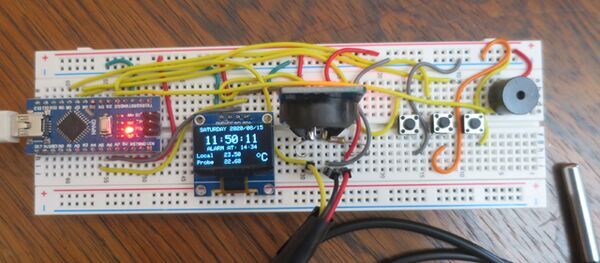
Arduino Nano Project Displaying Clock, Calendar and Internal and External Temperatures
"This project is about building your own micro controller hardware and software. The micro controller is the Arduino Nano. The development software platform is either PlatformIO or Arduino development studio. After years of programming mainframes, mini-computers, and desktop computers I decided to try micro controllers. My choice was Arduino nano micro controller. I selected two projects: the WayIn Real Time Clock Kit (Project Link) , and building your own digital thermometer by Barry Lim (Project Link) I purchased the Arduino real time clock kit and the parts needed for the building your own thermometer." [...]

SoraBot-UVGI | Autonomous UVGI Robot
"SoraBot-UVGI is a modular robot for sanitizing surfaces. It is small, it is equipped with self-driving, it is open-souce and low cost. When I started this project, my first thought was that I had to make a robot buildable in a short time and at the lowest possible cost. I set myself the following main objectives: Sanitation of environments and surfaces; Low cost, for everyone; Autonomous; Configure the route in a simple way: path planning; Set UVGI (Ultraviolet Germicidal Irradiation) points where you can stop and sanitize surfaces, such as handles, desks, chairs, sinks, toilets, etc... Modular UVC lamps section. First of all I gave it a name: SoraBot-UVGI. I thought of making a robot that could be manufactured by as many people/companies as possible, so the cost of construction was a fundamental element." [...]
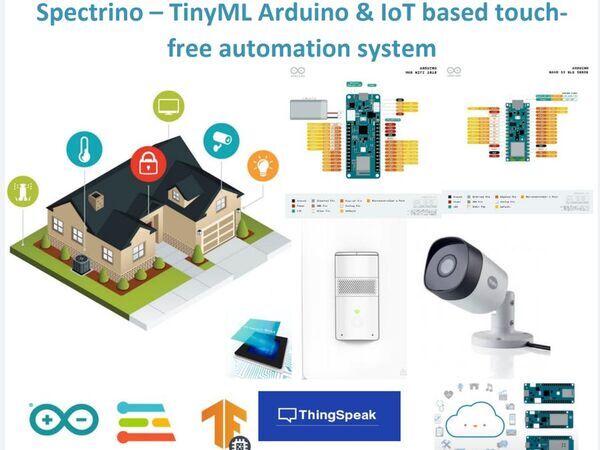
Spectrino: TinyML Arduino & IoT Based Touch-Free Solutions
"Spectrino - Arduino devices that can be implemented on a wide spectrum of touch-free tinyML based housing and society systems. The pandemic has introduced a constraint to social interaction: distance. Considering this factor of risk, countries all over the world have been in varying levels of quarantine, and many malls have had to close down due to significantly lowered consumer count. This has led to a very, very high level of layoffs of mall personnel, as well as similar economic challenges for business owners. This has caused relative low-income (less than $40,000 in annual earnings) job loss levels as of July 2, 2020 in the US due to COVID-19. Accommodation and Food Services, as well as Retail Trade and Entertainment collectively count for ~4,000,000 of the estimated jobs lost." [...]
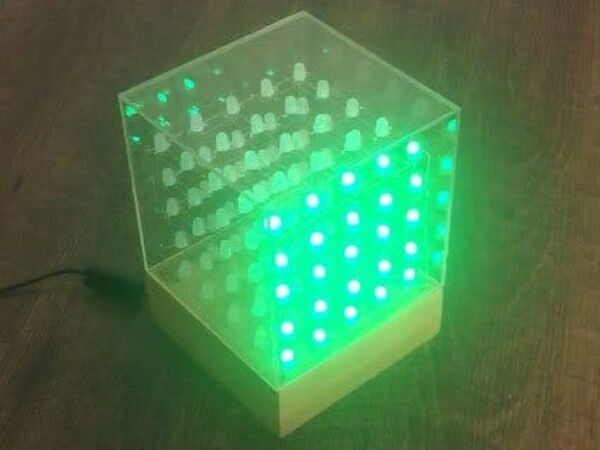
Another 5x5x5 RGB LED Cube
"This is the forth cube project I have posted here. I said in the third one that it would be the last, but this cube is a whole new way to build cubes - much easier, using LEDs very similar to the programmable LEDs that Adifruit's Neo-Pixel strips and panels use. This approach makes an LED cube that is multi-color, very bright, easy to construct and easy to program. Hardware Overview Usually we have external shift registers to provide the huge number of digital pins necessary to control a cube. My first three cube projects eliminated the shift registers by using the large number of digital output pins on the MEGA. But this cube is totally different." [...]
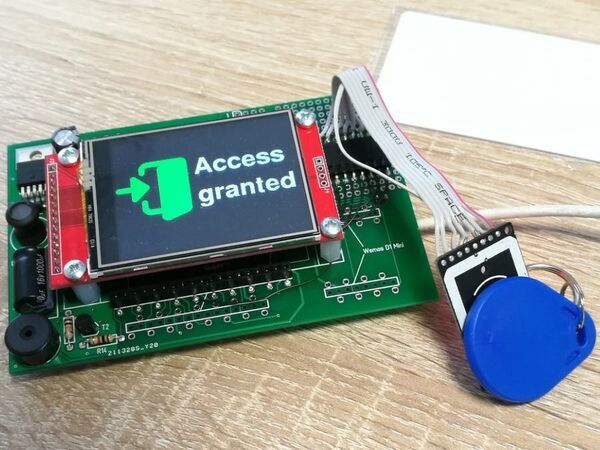
ESP32 Based RFID Reader with Touch Display
"How to design a nice looking RFID reader based on ESP32 with ILI9341 touchscreen display and for wall mounting. It is very easy to create a nice looking RFID reader with TFT output for wall mounting with an ESP32 DEV KIT C module and an AZ-Touch ESP kit. You can use this reader for door access or intruder alarm terminals. It's easy to extend this simple design for more complex application and wireless data transmission. " [...]
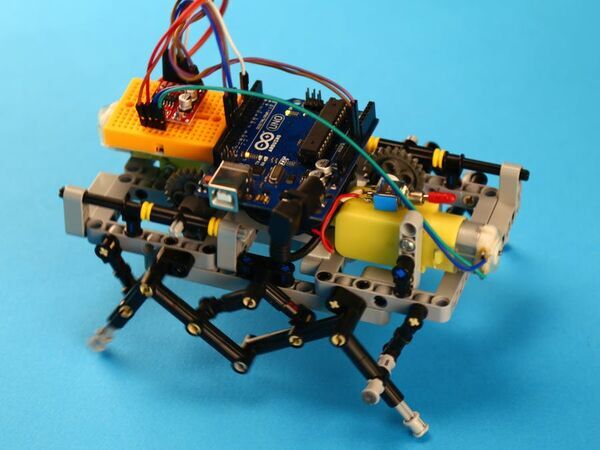
A DIY Hexapod Robot with Arduino, Lego, and 3D Printed Parts
"A programmable 6-legged robot with Lego, Arduino, and two off-the-shelf DC gear-motors for project-based STEM learning. Legged robots have always been one of the most interesting creations in the robotic industry as they could help us in exploring mysterious lunar caves and other space exploration missions. In fact, legged robots are mobile robots with articulated leg mechanisms that provide locomotion on rough trains. As compared with wheeled robots, they can move on different terrains, although, at a slower speed. Legged robots are often complicated to make and control, as it requires precise control of each leg to maintain balance. In this project, we are aiming to make a fun and easy-to-build six-legged robot with LEGO Technic components and an Arduino board (Fig A)." [...]
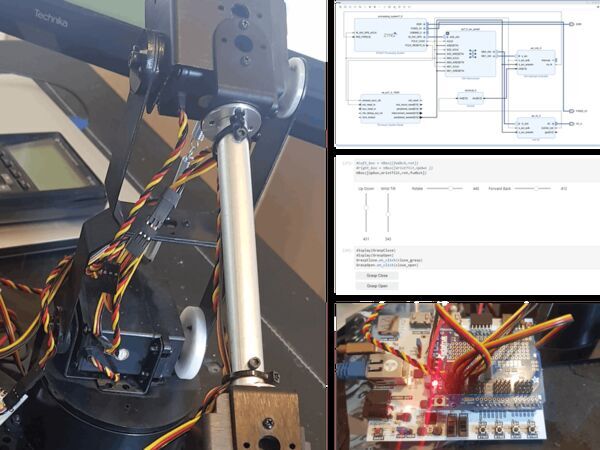
PYNQ RobotArm
"PYNQ rocks! Using widgets and AsyncIO we can control complex hardware very easily. Let's use a robot arm to demonstrate. Why PYNQ? One of the first projects we did here on Hackster was to create a bare metal robot arm which could be positioned using Pmod Joysticks. It was a great project to create and demonstrated well how to control servos and and interface to the joysticks to create a fun solution." [...]
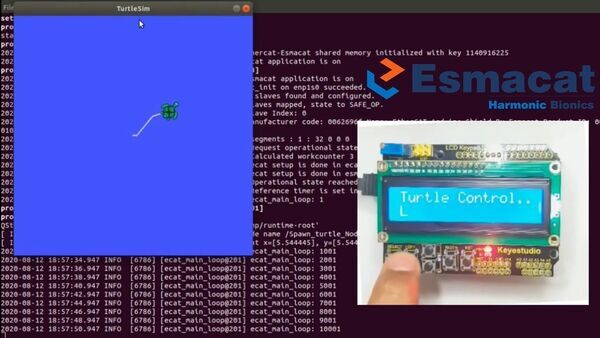
Turtlesim Teleop with EtherCAT and Arduino Using ROS
"Use ROS (running on Esmacat Master S/ Esmacat Master C) to teleoperate the turtlesim node using analog input from LCD Shield with EASE. In this tutorial, you will learn how to set up an Esmacat Master S / Esmacat Master C running Robot Operating System (ROS) to act as an EtherCAT master. It will be used to control the turtlesim node using an EtherCAT Arduino Shield by Esmacat (EASE) Slave device. First, some general information about the EtherCAT Master and ROS is discussed. After learning to set up the EtherCAT Master, you will learn to implement a practical project to teleoperate the Turtlesim Node using analog value input from the LCD Shield with EASE using ROS. EtherCAT Arduino Shield by Esmacat (EASE): EASE Is an EtherCAT slave that connects to an EtherCAT master (Raspberry Pi/PC/ Laptop/ Dedicated EtherCAT Master devices like the Esmacat Master S and Esmacat Master C.) It can be stacked on top of Arduino, other MCU boards with an Arduino Uno form factor, and shields." [...]
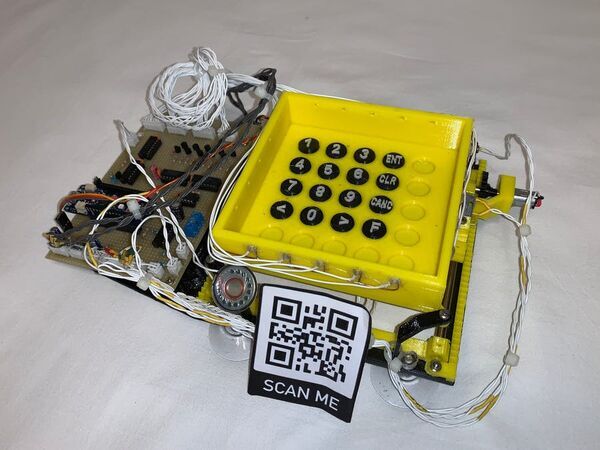
Universal Touch-Free Keypad Adaptor for Existing Keypads
"A device that mounts on top of a traditional keypad and transforms it into a touch-free and bluetooth controllable one. Nowadays we are all facing the Covid-19 pandemic; we know that there are multiple ways to get infected and one of these is by touching someone who is infected or by touching something that has been touched by someone who is infected. In fact the the virus resists several hours on certain surfaces. During our daily live we touch many objects that had been touched by others before. When we get into an elevator, for example, we have to press a button to select the desired floor. This project is taught for all those machines that relay on a traditional keypad (elevators self-service petrol station, public water dispenser), where the user has to physically touch buttons of a keypad, exposing himself and others to the risk of getting infected." [...]
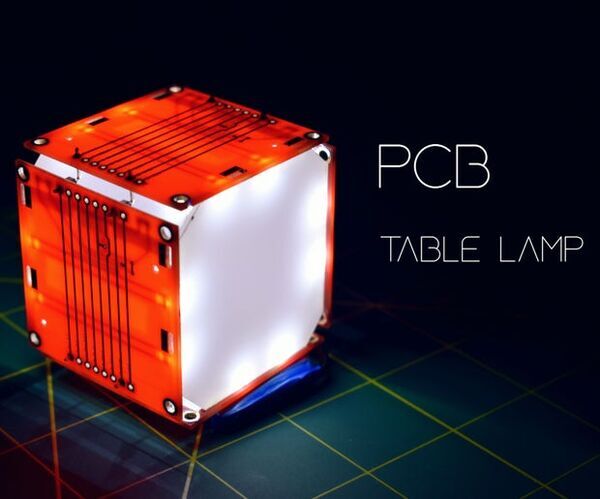
PCB Table Lamp
"Nowadays we find a lot of e-waste, and some of them are PCBs that are directly scraped because they malfunction. Now specifically speaking about the LCD display, while manufacturing these displays many errors can occur which are unknown to a naked eye. when kept in the light they fall black this is one way to find the damaged boards. so today we will make a lamp with these PCBs. They look really attractive after finishing. Supplies: 1. damaged PCBs ( LCD board ) 2. translucent acrylic sheet 3." [...]

UV-C Based Germs Disinfecting Machine
"A touch-free germs disinfecting device that can disinfect anything from Masks, Wallets to Mobile phones, killing maximum germs using UV-C. I always wanted to build something useful to the society and the world. Having been experienced in doing several science projects in electronics and IoT, I wanted to utilize my skills in such a way that most of the front-line workers are benefited from that. Due to the ongoing pandemic, things have changed a lot. We need to wear masks everywhere, sanitize our hands time to time, etc. One such issue that I found was, after using our mobile phones or other things outside, we often forget to sanitize them or we do it with liquid disinfectant." [...]

Slack Status Updater With ESP8266
"This project helps make your day a little easier if youre a remote worker using Slack. Ill show you how to build it using an ESP8266 wifi board. Don't miss the video above for the overview. Whether youre new to using Slack or youve just been using it a lot more lately, youll understand the importance of setting your Slack status. It lets your colleagues know if youre available to chat, in a meeting, out sick, etc. Forget to set it when you leave your desk, and you may get interrupted by somebody who thinks youre available.I thought it would help me remember to have a physical device on my desk that can set my Slack status for me." [...]

SATtiny
"SATtiny is a solar Circuit Sculpture in a form of a satellite with blinking LEDs with optimized current consumption to last all night long. After seeing the great sculptures form Mohit Bhoite, I fellt in love with his satellite sculpture. For my own satellite sculpture, I set the goal to see it blinking not a few hours but the whole night! and also to have the chance to choose the pattern I wanted, may be emulating an RC discharge curve or even morse code. For that, a micro controller was needed. Looking at the market I found the ATTinyxxV line to be one of the most suitable for this project." [...]

Touchless body temperature detector
"This project is able to measure body temperature touchlese, and when the alarming temperature is met, the machine would beep urgently. I was inspired by those very expensive touchless temperature detecor machine be sold on the market, it usually costs around $2000 to buy a touchless temperature detector machine. Thus I want to build a low-cost machine personally and promote it to those small vendors who pursue performance so much.As a self-study person, I am very grateful that this platform provides an opportunity for me to exchange ideas with others, I would open source all the information to make it easier to share. This machine is able to detect body temperature touchless, it is powered by Arduino Nano, Ultrasonic sensor module, and MLX90641. This machine is very convenient to use, it is becasue that the LCD screen is able to display both th e detected temperature and the alarmimg temperature at the same time, this would allow users to have a direct experience.In addition to that when the alarm temperature is reached, the LED would glow red with a fierce buzzer, and when the detected temperature is normal, the LED would glow green with a brief buzzer. We could adjust the alarm temperature and the beeping sound manually by pressing the button on the machine.This will facilitate the elderly to use the machine, because it avoids comolicated computer operations.The elderly are susceptible to the Covid-19 virus, so I hope my project would make them feel convenient to use." [...]

Autonomous UV Robot with SLAM
"The affordable autonomous robot provides localization and mapping facilities and safely navigate the robot through the environment. As we face a worldwide healthcare crisis caused by COVID-19, there's a large need for disinfection. This tutorial can be followed by anyone who is new to ROS all the instructions are mentioned so that you too can build an autonomous UV bot. UV-C in many parts of the globe for fighting the COVID-19. Currently, such units are either stationary or moved by humans. We improved upon that concept and built an autonomous, mobile unit that may move around lobbies and hallways to get into rooms for disinfection." [...]

Arduino Game Controller
"DIY game controller project with a Pro Micro which uses an ATmega32U4 microcontroller for emulating a game controller. SO this post is gonna be about a "DIY Gaming USB Controller" which we have been working on recently at ElectroPunkz Labs. the idea here is to make a cheap Atmega32U based USB controller with buttons and analog joysticks that can be used to play games like NFS, GTA, half-life, LITTLE FIGHTER 2!etc We've made our controller in two form factors, the first one is based on PS1 or SNES config and other is a straight-up Xbox USB controller with analog sticks and buttons (not yet finalized) We gonna Make V1 in this post which is the PS1 layout Controller! It's better if you watch the project's Video First- MATERIALS the hardware is pretty simple and easy to get (except for the PCB, you can make your own with the attached PDF file of PCB) Arduino Leonardo/ Pro Micro/ Atmega32U Buttons (tick tack switches) Custom etched PCB (button matrix PDF is attached) 10K Resistors Jumper wires" [...]
That's all Folks!



